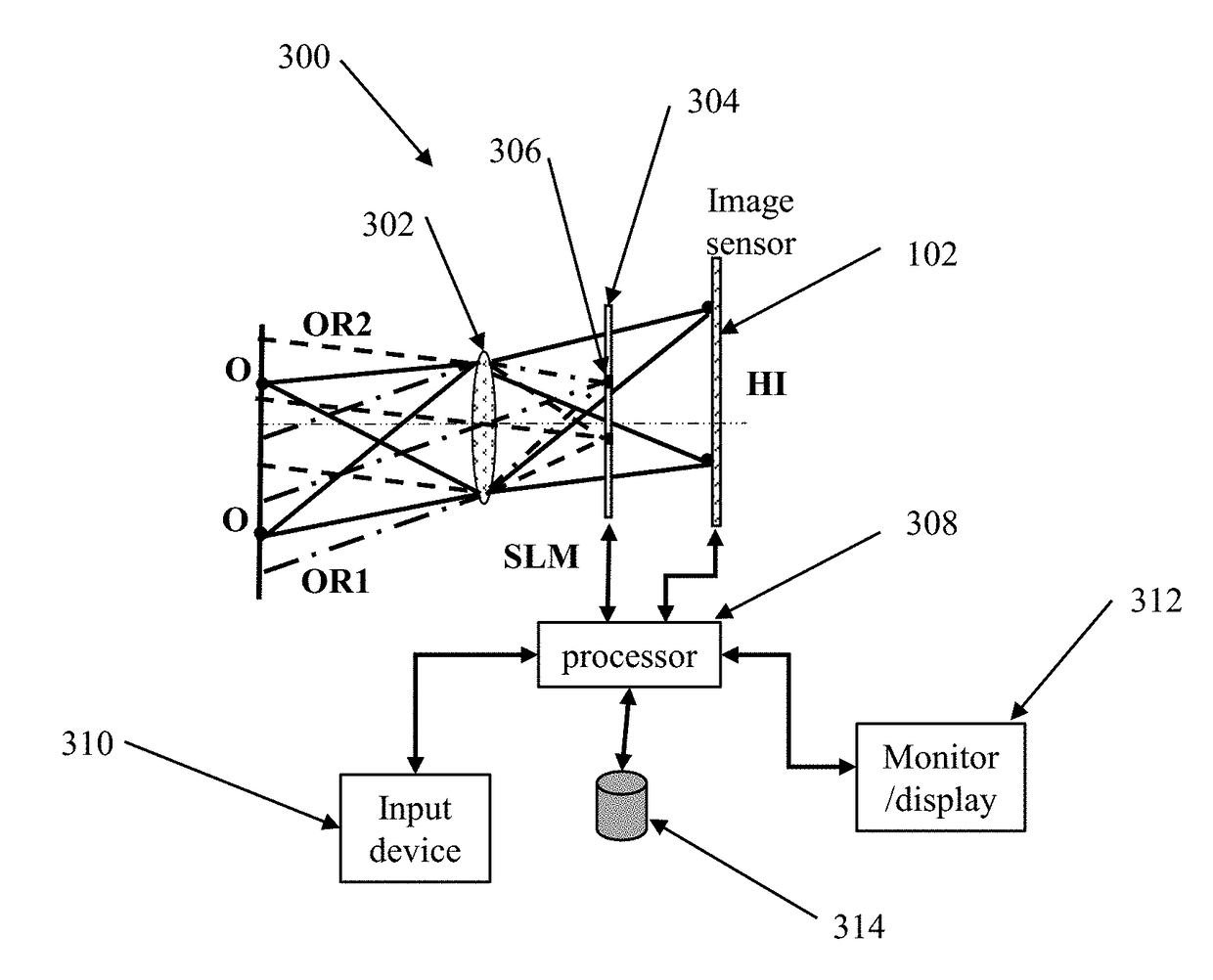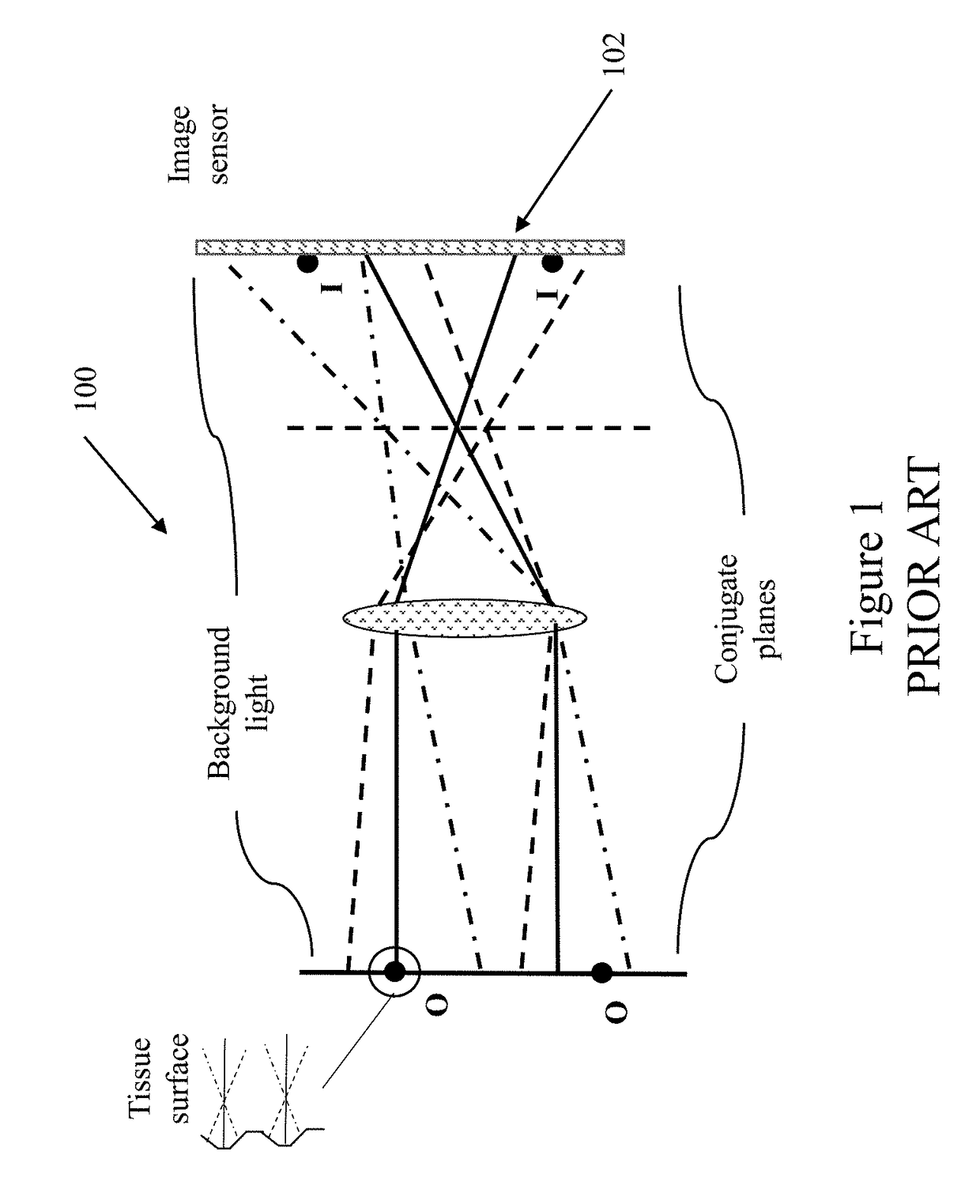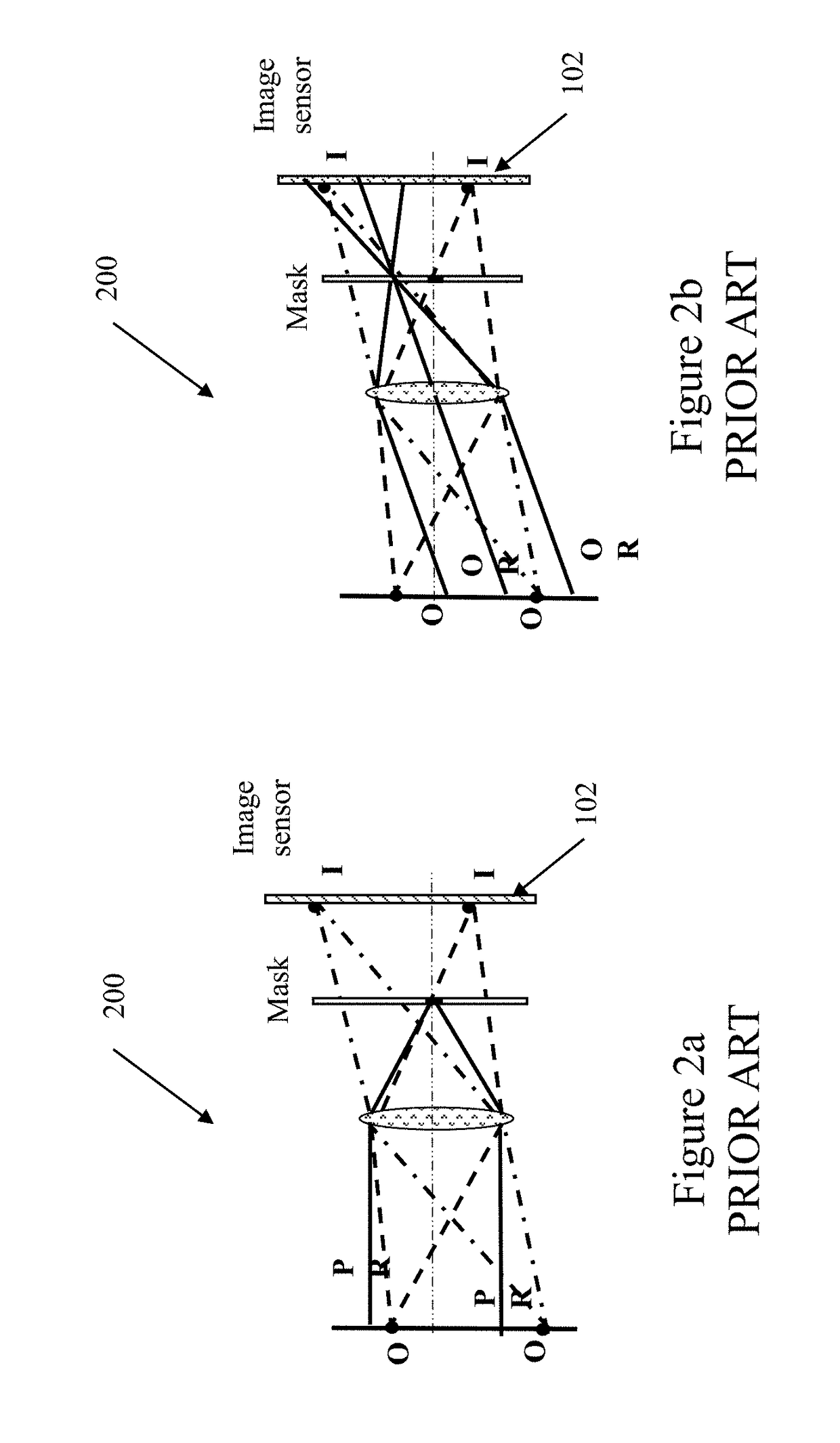Method and Apparatus for High Contrast Imaging
a high contrast imaging and high contrast technology, applied in the field of high contrast imaging, can solve the problems of low image contrast, difficulty in high contrast imaging, loss of scene fidelity, etc., and achieve the highest possible contrast, increase image fidelity, and enhance image contrast
- Summary
- Abstract
- Description
- Claims
- Application Information
AI Technical Summary
Benefits of technology
Problems solved by technology
Method used
Image
Examples
Embodiment Construction
[0029]It is understood that imaging can be performed at any suitable frequency and with the appropriate devices. Here for convenience, Applicants refer to the optical imaging system, that uses the visible and near infra-red spectral regions of the electromagnetic spectrum. Any arbitrary object is visible to the imaging system due to any number of physical attributes, such as, reflectivity, scattering or differential phase. The strength of the light intensity originating from the object and that originating from non-object features, are both dependent on the strength of the incident illumination. The goal of any imaging system is to capture as much of the light from the object features while minimizing the background light from entering the imaging system. In practice, it is not possible to reduce one without the other, resulting in poor object visibility due to the bright background. Contrast of the recorded image is further degraded due to the finite resolution of the image detecti...
PUM
 Login to View More
Login to View More Abstract
Description
Claims
Application Information
 Login to View More
Login to View More - R&D
- Intellectual Property
- Life Sciences
- Materials
- Tech Scout
- Unparalleled Data Quality
- Higher Quality Content
- 60% Fewer Hallucinations
Browse by: Latest US Patents, China's latest patents, Technical Efficacy Thesaurus, Application Domain, Technology Topic, Popular Technical Reports.
© 2025 PatSnap. All rights reserved.Legal|Privacy policy|Modern Slavery Act Transparency Statement|Sitemap|About US| Contact US: help@patsnap.com



